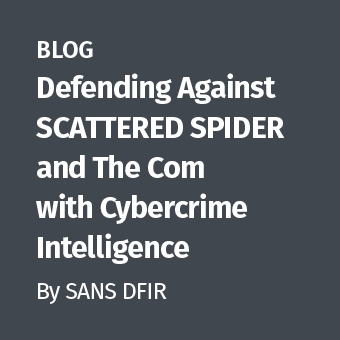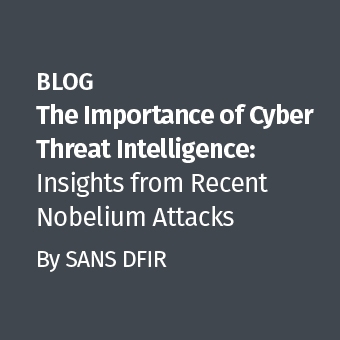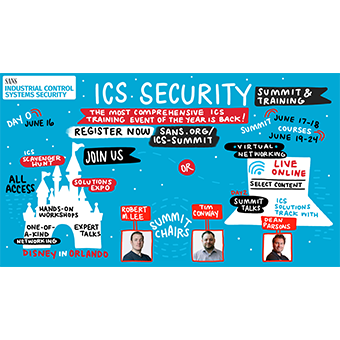Attribution to cyber attacks means different things to different audiences. In some cases analysts only care about grouping multiple intrusions together to identify an adversary group or their campaign. This helps analysts identify and search for patterns. In this case analysts often use made up names such as "Sandworm" just to group activity together. To others, attribution means determining the person, organization, or nation-state behind the successful intrusion or attack; this latter type of attribution I will refer to as true attribution. There are many issues with true attribution that I want to explore here. However, there are also those that have pushed back on analysts exploring motives to an attack that I also want to call attention to. When dealing with attribution analysts should avoid the extremes: using true attribution inappropriately or being too hypersensitive to perform analysis and explore motives. Good analysts know when to seek true attribution and when to avoid it.
To explore these concepts I will look at true attribution at the tactical, operational, and strategic level of threat intelligence. While these levels should not be seen as a static category it will help shape the discussion. Tactical threat intelligence often deals with those folks who do the day-to-day security such as performing incident response and hunting for threats in the environment, operational threat intelligence refers to those personnel who work to identify adversary campaigns and often focus on aspects such as information sharing and working through organization knowledge gaps, and the strategic threat intelligence category I'll use to refer to those personnel that sit at senior decision making levels whether it be executives or board of directors members at companies or national government officials and policy makers.
True Attribution at the Tactical Threat Intelligence Level
In my opinion, true attribution at the tactical threat intelligence level is only harmful to good security practices. Trying to identify who was responsible for the attack seems like a good idea to help shape security practices. As an example, an analyst who thinks that China is in their network might begin looking for intellectual property theft and try to shortcut their effort to identify the adversary. But think about that for a moment. Because our hypothetical analyst thought China was in the network, they have begun to look at the data in front of them differently. In this case, attribution has led our analyst to the land of cognitive bias. Cognitive biases are especially dangerous when performing analysis as they bias the way you think — and analysis leans so heavily on the human thought processes that it can lead us to inappropriate conclusions. Now, instead of keeping an open mind and searching for the threat in the network our analyst is falling prey to confirmation bias where the analyst is looking at the data differently based on their original hypothesis that China is in the network.
This begs the question though, if the analyst has nothing else to go off of shouldn't they look for the tactics, techniques, and procedures of China in the network as a starting place? In my opinion that is the role of those often funky sounding made up campaign names or intrusion set names; this is what others sometimes call attribution but not true attribution. An analyst that thinks they know what "China" looks like really only knows previously observed activity. If I tell you to think about what China would be doing in a network you might think intellectual property theft. If I tell you the threat is Russia you might think of cybercrime or military pre-positioning. If I say Iran maybe you think about data destruction. The problem is, that thought process is tied to previously observed activity and it's also going off of the assumption that previous true attribution you've heard is correct. Even if we assume all the previously true attribution was correct though analysts have only ever heard of or seen some of the campaigns by adversaries. Russia has teams that are interested in intellectual property theft just as China has teams that are interested in military pre-positioning. We are biased in how we view nation-state attribution based on campaigns we have seen before and it is difficult to take into consideration what is unknown. The better tactic is in identifying patterns of activity such as "Sandworm" and thinking to previous observed threats tactics, techniques, and procedures as a starting place in how we search the network for threats. Then tactical level threat intelligence analysts aren't biased by true attribution but can use some element of attribution to learn from threats they've observed before while attempting to avoid cognitive biases.
True Attribution at the Operational Threat Intelligence Level
At the operational threat intelligence level the use of attribution needs to fit the audience. Operational level threat intelligence analysts should always attempt to serve as the bridge between the strategic level players and the tactical level analysts. When using the observations and information from the tactical level to translate to strategic level players there can be a role for true attribution, which we will explore later. When translating the observations at the strategic level and operational level to the tactical level though true attribution then again becomes dangerous. The way threat intelligence is positioned should be determined by the audience consuming it.
Consider this: an operational level threat intelligence analyst has been asked to take the campaigns observed in the community and translate that information for the tactical level folks to use. The indicators of compromise and security recommendations that the tactical level personnel should use are independent of attribution. The security recommendations and fixes are based off of the observed threat to the systems and vulnerabilities not the attribution; or said another way if you have to patch a vulnerability you don't patch it differently if the exploit was Chinese or Russian based.
However, that same operational threat intelligence analyst has been asked to identify the threat landscape, the observed campaigns in the community that are relevant to the organization, and make recommendations for strategic level players that can influence organizational change. Here, the analyst may not be able to prove true attribution based off of observed adversary activity but it is in their best interest to identify patterns and motives to attacks. As an example, if there have been a number of campaigns recently that align with the motives of Chinese actors targeting the analysts' company the recommendation from the operational level analyst to the strategic members might have them take into consideration how they interact with and do business with China. Here the analyst should use language to structure their assessment that the observed threats are Chinese based such as "high confidence", "medium confidence", and "low confidence." Language such as "it is definitively China" should be avoided. Ultimately analysis is based on incomplete data sets (consider the difference between inductive and deductive reasoning) and the provided information is just an assessment.
At the operational level of threat intelligence analysts should be mindful of their audience and be open to putting forth good analysis based on observed activities, threats, and motives without being definitive on true attribution.
True Attribution at the Strategic Threat Intelligence Level
Strategic level audiences often heavily care about true attribution but not always with good reason. Government leaders and company executives want to know their threat landscape and how it might shape how they conduct business or policy. That is a good thing. However, strategic level players should be careful not to use true attribution when it's not required.
As an example, if the organization is facing security challenges and is consistently having intellectual property stolen they need to look at the security culture of the organization and the resource investments needed to increase security and minimize risk. This inward look at the culture and security investments should usually be independent of true attribution. The tactical and operational level impacts are going to be the same whether the previous culprits were China, Iran, Russia, or the North Pole. However, if the organization is taking an outward approach to doing business or policy making they may need to consider true attribution. Because true attribution is usually based off of assessments and not usually definitive it should usually be approached as a continuum.
To look at true attribution especially for this level of threat intelligence I highly recommend two resources. First, a paper by Dr. Thomas Rid and (soon to be Dr. — congrats Ben!) Ben Buchanan titled Attributing Cyber Attacks. This paper will get you into the right mindset and understanding of attribution for the second paper I would recommend by Jason Healey titled Beyond Attribution. In Beyond Attribution, Jason Healey discusses the concept of responsibility as it applies to attribution. In short, a nation-state has responsibilities with regards to cyber operations especially if they might have been conducted from within its borders. At one side of the scale, a state can take an approach of prohibiting attacks and actually help other nations when an attack has begun. On the other side of the scale a state actually conducts the attack and integrates their attack with third-party proxies such as private companies for hire or hacktivists.
Analysts should be mindful of this spectrum of state responsibility, as Jason calls it, when considering true attribution and the nature of intelligence assessments. It is difficult to have true attribution and true attribution can be harmful to tactical level security. However, identifying motives in attacks and understanding the spectrum of state responsibility to attacks should be considered at the strategic level so that we are not so hypersensitive on the topic of attribution that every adversary gets to operate without consequence.
Case Study: Cyber Attack on the Ukrainian Power Grid
Let's take these concepts and apply it to the cyber attack on the Ukrainian power grid. If you're unfamiliar with the case you can read about it here. In this case, I have been very careful about my wording as I know there are multiple audiences that see my quotes in media or read my reports. On one hand, I teach a threat intelligence course and an ICS/SCADA active defense and incident response course at the SANS Institute. In this capacity most of my audience is tactical and operational level personnel. For those reasons I have often tried to reinforce that attribution in Ukraine doesn't matter for them. Identifying indicators of compromise to hunt throughout the network, preparing the network to make it more defensible, and applying lessons learned from the Ukraine attack are all independent of true attribution. True attribution simply doesn't matter for how we apply the lessons learned for security at those levels.
However, I also deal with strategic level players in my role in academia as a PhD student at Kings College London and as a Non-Resident National Cyber Security Fellow at New America where I work with policy makers. For this audience, it is important for me to note that definitive true attribution has not been obtained in the Ukraine attack and may never be obtained. However, in considering Jason's spectrum of state responsibility we have to look at the attack and realize the potential motives, the larger geo-political setting, and analyze if there are any courses of action strategic level personnel should take. In my opinion, I doubt the Russian government itself carried out the attack. However, the attack on the Ukrainian power grid did not fit any apparent financial motives and the motives aligned with various Russian based actors; whether those are private companies, hacktivists, or senior government officials. Therefore, it is in my opinion and in my analysis that strategic level players should look at the elements of attribution that link to Russian based teams and consider Jason's spectrum of state responsibility. Even if Russia had nothing to do with the attack there should be an investigation into whether or not it occurred from within their borders. If the attack is state-ignored it sets a dangerous precedent. Senior policy makers in other nations should under no circumstance jump to blaming Russia for anything. However, they should look for international cooperation and potentially an investigation as this is a first-of-its-kind cyber attack on civilian infrastructure that led to a power outage. There is a line between espionage and offense; that line was crossed in Ukraine and we must be careful of the precedent it sets.
Conclusion
In conclusion, true attribution is highly abused in the information security community today. Many organizations want true attribution but do not know how to use it appropriately and many private companies are quick to assign definitive attribution to attacks where they simply do not have the appropriate data to support their conclusions. True attribution makes media headlines and the motives for companies to engage in this activity are significant for that reason. Claims of true attribution do increase intentional tension; not as significantly as some would assume but they are individual data points to policy makers and national level leaders. However, being hypersensitive about true attribution enforces a culture in this field where nation-states can ignore responsibility such as investigating attacks or policing their borders as is normal in international law and policy in any other domain other than "cyber." There is a balance to be struck. Knowing how to strike that balance and when to use attribution in the form of group names with no state ties or true attribution in the form of an evolving assessment will help the threat intelligence community move to a more mature point where tactical, operational, and strategic level players can all benefit.





